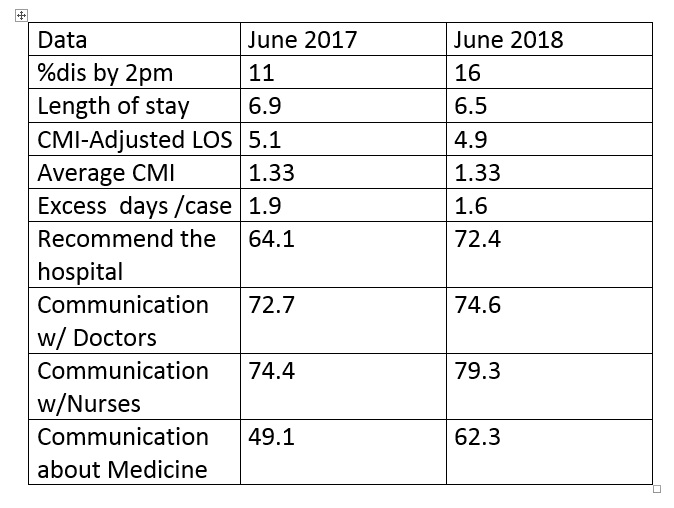Background: Admitted Hematologic and Oncologic patients are often complex and have a unique set of challenges. Balancing outpatient care plans with inpatient medical and psychosocial issues can lead to long lengths of stay, patient dissatisfaction, and provider burnout. Hospitalists offer an expertise in managing complex medical problems along with an adept ability to integrate and facilitate medical services in a collaborative and multi-disciplinary manner. As such, a hospitalist-lead Heme-Onc care unit has the potential to mitigate some of these challenges.
Purpose: To develop a hospitalist-lead disease specific multidisciplinary care model that cohorts Hematologic and Oncologic patients onto a single unit to improve care delivery and efficiency during hospitalization.
Description: Our multidisciplinary hematology-oncology team consists of Hospitalists, Bed Management, Nursing, Advanced Practice Providers, Nutrition, Hematologists, Oncologists, Palliative Care Physicians, Radiation Oncologists, Social Workers, and Case Managers. Innovations include: 1. Designation of a Senior Hospitalist as physician lead on the unit overseeing all patients to ensure standardization of best practices
2. Hospitalists as physician-of-record on all faculty Heme-Onc patients
3. Education of Hospitalist physician lead to develop specialization in hematology-oncology
4. Proactive electronic labeling of patients on admission to cue Bed Management to cohort patients to the designated unit
5. Daily multidisciplinary rounds to discuss care plans, address goals of care, monitor pain management, expedite testing, identify patients at high risk for chemotherapy side effects, and discuss discharge planning
6. Educational sessions provided by Hospitalists to Advanced Practice Providers and Nursing
7. Monthly multidisciplinary meetings occur to review unit metrics and identify successes and areas of opportunity.
Conclusions: We created a care model for a challenging subset of patients with hematologic and oncologic diagnoses. Interdisciplinary rounds have fostered better communication and improved collegiality between the disciplines and all staff. Successes have been notable in reduction of length of stay, and improvement of patient satisfaction, and communication, as well as provider satisfaction (nursing, APP, hospitalists, and subspecialists). Employee engagement and satisfaction survey on this unit also improved, with all staff listing the highest level of employee satisfaction. Despite the continued complexity of the patients (as evidenced by the CMI) our collaborative effort has led to gains in throughput, patient satisfaction, and staff satisfaction.

